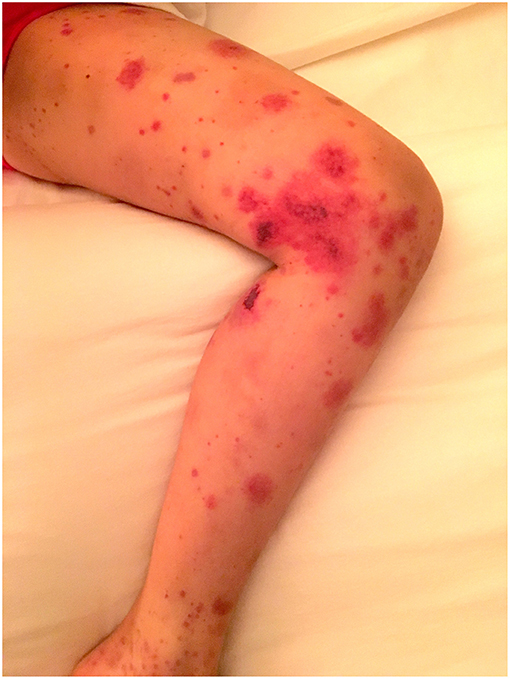
James, seven, is brought in by his parents for review of a rash that has developed over the past 24 hours.
James has been unwell for a week, with intermittent fever, sore throat and abdominal pain. His parents thought he may have had the flu, which had been going around school, but he returned a negative COVID-19/influenza rapid antigen test.
While the fever has improved, James’ parents are concerned about the rash.
He has also developed bilateral hip and knee pain, and the abdominal pain has not resolved. The rash is non-tender and affects the lower limbs, buttocks and elbows.
Vital signs are within normal range — apart from blood pressure, which is slightly elevated at 125/85mmHg. Urinalysis is positive for blood.
What is the most likely diagnosis?
Correct!
Henoch-Schönlein purpura is a small-vessel vasculitis that is associated with IgA immune complex deposition in the skin, joints, kidney and gastrointestinal tract.
It is the most common vasculitis of childhood, typically affecting children aged 2-8. Around 10% of cases occur in adults, in whom disease is typically more severe.
The classic presentation is a tetrad of symptoms: palpable purpura (typically affecting the lower limb, buttocks, elbows and knees), abdominal pain (due to gastrointestinal vasculitis), renal involvement (typically haematuria with or without proteinuria) and arthritis/arthralgia (usually large joints of the lower limbs).
Less common symptoms include orchitis, pulmonary haemorrhage and CNS involvement, with headache or change in mental state.
A recent history of URTI is present in 50% of cases, commonly group A streptococcus infection.
The diagnosis is clinical, based on the characteristic rash and presence of one or more of arthritis/arthralgia, abdominal pain or nephritis.
That said, further investigation is warranted to rule out serious differential diagnoses (such as immune thrombocytopenic purpura, leukaemia, meningococcal infection and autoimmune nephritis) when there is clinical uncertainty and to identify potential complications of Henoch-Schönlein purpura.
Mild cases may be managed in the community symptomatically with simple pain relief, including a short course of NSAIDs if there is no renal involvement.
Admission is warranted for any cases where hypertension; macroscopic haematuria; peritonism; testicular, respiratory or neurological symptoms are present; or if simple analgesia is insufficient for pain management. Moderate to severe disease may warrant steroid therapy.
Regular follow-up, with blood pressure and urinalysis assessment, is warranted for at least 12 months to monitor for subsequent renal involvement.
Relapses may also occur in as many as 30% of cases up to 10 years after initial presentation.
